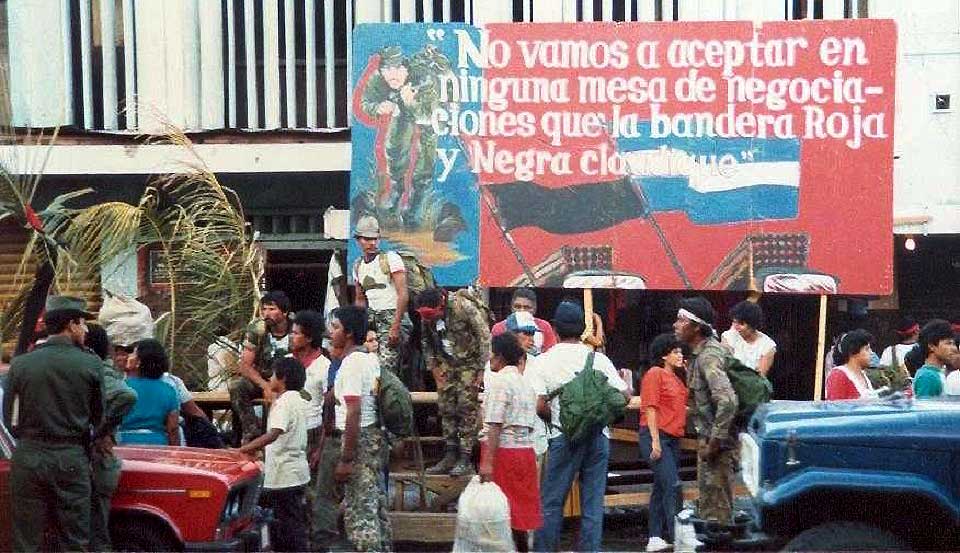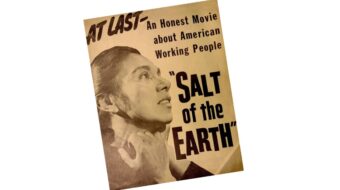
Daniel Kovalik’s new book Nicaragua: A History of US Intervention & Resistance is a timely text given the recent heightened attacks against Nicaragua. Since the failed coup attempt in 2018 against the Ortega government and the Sandinista Party, U.S. imperialism has been on a steady pace to cause disruption in the revolutionary process in Nicaragua, particularly through economic sanctions and information warfare. Kovalik is an activist, journalist, former labor lawyer, intellectual, and author of several books, including The Plot to Overthrow Venezuela and How the US is Orchestrating a Coup for Oil.
This book focuses on the history of Nicaragua, starting with the U.S. occupation of Nicaragua by William Walker in 1835, who would eventually be overthrown in 1856, and again in 1910 by the U.S. Marines directed by President William Howard Taft to overthrow nationalist president José Zelaya. These imperialist excursions were supposedly due to the U.S.’s interest in dominating the region and extracting its resources, beginning with the Panama Canal and interest in building a canal through Nicaragua. Zelaya set forth a program of national sovereignty and development through the building of roads, ports, railways, government buildings, and more than 140 schools. Unfortunately, this revolutionary vision was put to a halt under the new corrupt neocolonial regime of Adolfo Díaz.
Nicaragua would continue to be under U.S. occupation until 1933. This was possible due to draconian treaties signed between the U.S. and Nicaragua like the Castillo-Knox Treaty of 1914, which gave the United States the right to intervene in Nicaragua to protect U.S. interests. These treaties transformed Nicaragua into a semi-colony of the United States. Nicaraguan resistance existed and persisted, however. Augusto C. Sandino, now Nicaragua’s National Hero, began his guerrilla resistance movement against the occupying forces in 1927, eventually leading to the ouster of U.S. forces in 1933, but was murdered by leader of the National Guard, Anastasio “Tacho” Somoza García, whose family would rule and terrorize Nicaragua for the next four decades.
After the defeat of Sandino’s guerrilla forces and the overthrow of the Nicaraguan government by the Director of the National Guard, the book fast forwards to the waning days of the Somoza family dictatorship where there was heavy repression against revolutionary forces and regular citizens of the country. The Somoza family had empowered the National Guard as its main paramilitary and terroristic force, that would be trained next door at the U.S. Army School of the Americas.
After the 1972 earthquake that devastated the country, donations from around the globe went into the pockets of the Somoza family. The family also owned a company that sold off poor Nicaraguans’ blood plasma to U.S. and European companies for profits as opposed to helping those in need from the earthquake. Roberto Clemente, a well-known Puerto Rican baseball player, had plans to travel to Nicaragua with humanitarian aid, knowing well that the government was corrupt. Unfortunately, Clemente never made it to Nicaragua as his plane engine blew, killing everyone on board.
Somoza also assisted in U.S.-backed coups in Guatemala (1954) and the attempted Bay of Pigs invasion of Cuba (1961). During this period, the Sandinista National Liberation Front (FSLN) began to build a mass organization that was aiming to “establish a revolutionary government that will liquidate the reactionary structure originated by electoral farces and military coups. The popular power will forge a Nicaragua without exploitation, without oppression, backwardness, a free, progressive, and independent homeland.”
Once the Sandinistas became more popular and successful in their fight against Somoza, intense repression began with the backing of the U.S. government (under Jimmy Carter at the time). In 1978-79, 50,000 Nicaraguans were killed by the Somoza government’s assault on its own population which included aerial bombing.
After a protracted struggle, on July 19, 1979, the Sandinistas defeated the Somoza government and took power over the country, unleashing a new revolutionary decade of triumph over U.S. imperialism and for national sovereignty and development. The new FSLN government practiced reconciliation and reconstruction, like the later post-apartheid South African government under the African National Congress. The Sandinistas welcomed the Catholic Church and business forces to be part of the united effort to build the country after the defeat of the Somoza family. The new government carried out many reforms, including land reform, literacy campaigns, the building of schools and hospitals, allowing workers and peasants to organize into unions, and more.
The U.S. did not give up, though, after the defeat of their neocolonial ruling family. Through the CIA and the Argentine military junta, they quietly organized former National Guardsmen who had been staying in neighboring Honduras and El Salvador. These National Guardsmen, termed “contras” (for counter-revolutionaries), would terrorize the country for the next 10 years while stunting the national program of the Sandinistas, who instead had to fight to defend their revolution and country. During this time as well, Nicaragua had taken the U.S. to the International Court of Justice seeking both to stop the war and to receive economic relief for damages caused by the U.S. sanctions.
In 1986, the World Court ruled in favor of Nicaragua, saying that “the support given by the United States, up to the end of September 1984, to the military and paramilitary activities of the contras in Nicaragua, by financial support, training, supply of weapons, intelligence and logistic support, constitutes a clear breach of the [customary international law] principle of non-intervention” for which the U.S. is liable. The U.S. owes close to $31b USD (adjusted for inflation) to Nicaragua following this case, including the CIA mining Nicaragua’s harbors, causing damage to ships, and blowing up an underwater oil pipeline, which the United States government continues to ignore to this day. Eventually, this crisis would spill out into the Reagan-era Iran-Contra Affair, which was the unconscionable selling of arms to Iran and the sale of cocaine in the U.S.—leading to the crack epidemic of the 1980s—to help fund this covert war in Nicaragua.
Even in the midst of this war, Nicaragua was able to host the first two democratic elections in its history. The election of 1984 brought the first electoral victory of the FSLN, and the 1990 elections occasioned its defeat due to the pressures from the Contra War. For the next 16 years under consecutive non-Sandinista governments, from 1990 to 2007, the people of Nicaragua would be relieved from war but begin to suffer a rollback of government programs and the installment of neoliberal governing and austerity. During this time, the FSLN suffered setbacks with splits and ideological factions, similar to what happened to the entire communist and workers party movements after the collapse of the Soviet Union in 1991. The consistency, though, was in the party’s leadership under Daniel Ortega, which continues to this day.
The Sandinistas won the elections in 2006 and returned to power in 2007. This was made possible through a concession that Ortega made with the previous neoliberal government to lower the winning percentage of the votes without going to the second round. The first order of business for the returning FSLN government was to restore the progressive programs of the 1980s which included making education and healthcare free, and the elimination of poverty throughout the country. Where under the neoliberal period there were successive rolling blackouts, the government also electrified the country, put in place programs to eliminate hunger, made the country food-sovereign, and fostered one of the highest gender-equitable countries in the world.
To end this history, the book finishes with the 2018 attempted coup in Nicaragua. There were weeks of protests and uprisings throughout the major developed areas of the country, supposedly due to President Ortega’s introduction of austerity measures as a response to U.S. sanctions against the country. “Daniel announced his modest social security changes,” Kovalik writes, “slightly increasing the amount workers would pay from their paychecks into social security in order to sustain their payouts and requiring an even greater contribution from employers—after he was unable to come to terms with Nicaragua’s chamber of commerce (COSEP), which was in fact demanding even more draconian cuts to social security in order to comply with IMF demands.” After the protests began, Ortega announced swiftly that he would not go through with the austerity measures.
During the years leading up to this insurrection—we are now in the Trump years—the U.S. had been financing NGOs to “promote democracy” which targeted anti-Sandinista sentiment. This financing was particularly from the USAID and the National Endowment for Democracy (NED), both known for instigating “color revolutions” around the world. The information warfare was strong. The “left” in the United States and Europe were split on the protests, with media showing mass street protests looking like an organic movement. The protestors, which included lumpen-criminal elements, were manipulated, and extremely violent toward government officials and pro-Sandinista supporters, going as far as murdering police, and raping women who would cross through their roadblocks set up throughout the cities.

The FSLN government listened to the calls from the Catholic Church during the national dialogue to remove the National Police from the streets to end violence. This was a strategic move by the government to prove to the world that the instigators of the violence were the anti-government protestors themselves which continued to inflict violence on Nicaraguan communities and bring the economic productivity of the country to a near halt. These counter-revolutionary protestors were not only backed by U.S. NGOs but also by opposition parties, including the Sandinista Renovation Movement (which split off from FSLN in the 1990s) and the Catholic Church (which had been included in the Ortega government in the 1980s and early on in his 2007 administration).
Along with the torture and murder of Sandinistas (up to 200 Nicaraguans were murdered during this insurrection), the protestors burned down historic buildings and monuments representing Sandino and the development of the country. The worst offenders of this crisis were the Catholic Church and business interests in the country. The Ortega government would follow by breaking ties with the Church following the betrayal. This attempted overthrow of the FSLN government strengthened their popularity and led to an outstanding victory in 2021.
This is a well worthwhile book to read. Kovalik does a great job tracing U.S. interventionism in Nicaragua and its attempts to “claim” the land and resources through its imperialist Monroe Doctrine approach. While rightfully, sharply criticizing the Biden Administration’s continued imperialist sanction approach to Nicaragua, Novalik poorly and strangely compares the January 6, 2021, coup attempt in the U.S. to the 2018 coup attempt in Nicaragua.
Though the coup attempt to overthrow the 2020 election in the U.S. may have not been as violent as the 2018 coup attempt in Nicaragua, a coup attempt is still a coup attempt, and U.S. intelligence still played a role (while split) in the events that led to and culminated in January 6. Donald Trump and the forces around him rightfully should be condemned and the democratic people of the United States have a right to call for their arrests and imprisonment for attempting to overthrow democracy in this country.
Daniel Kovalik
Nicaragua: A History of US Intervention & Resistance
Clarity Press, 2023
ISBN-13: 9781949762600
ISBN-10: 1949762602
We hope you appreciated this article. At People’s World, we believe news and information should be free and accessible to all, but we need your help. Our journalism is free of corporate influence and paywalls because we are totally reader-supported. Only you, our readers and supporters, make this possible. If you enjoy reading People’s World and the stories we bring you, please support our work by donating or becoming a monthly sustainer today. Thank you!












Comments